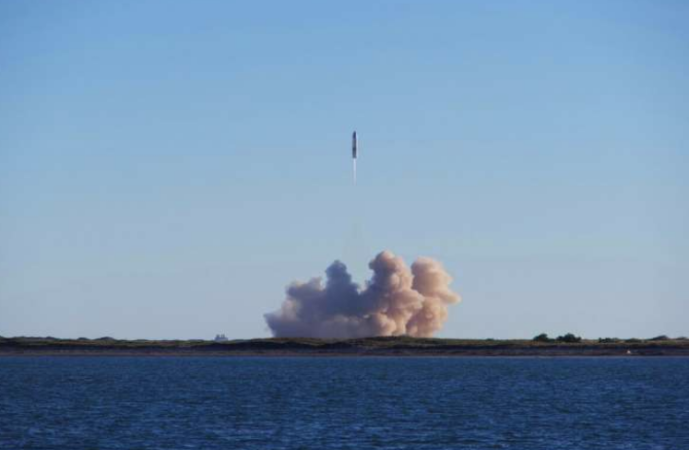What rises must eventually descend—and earlier this week, yet another of SpaceX’s Starships, the largest and most powerful rocket ever constructed, returned to Earth in dramatic fashion, culminating in an explosion high above the Indian Ocean.
This marks the rocket’s ninth test flight and its third catastrophic failure within just this year.
Should such outcomes be expected from a spacecraft that some are relying on to transport humans deeper into the solar system than ever before? Or does this pattern of failure reflect deeper, systemic issues in the overall program?
A Decade of Development
SpaceX’s Starship program, under Elon Musk’s leadership, has been in development for over ten years, evolving significantly in both design and objective.
The Starship concept relies on SpaceX’s Raptor engines within a multistage rocket system, in which two or three distinct segments—each equipped with its own engine and fuel—are used to leave Earth’s orbit and travel to celestial destinations like the Moon or Mars.
A critical innovation in the Starship design is its ability to land and be reused repeatedly—a strategy that worked impressively with the company’s Falcon 9 rockets.
Initial Starship tests began in 2018, with two low-altitude flights demonstrating early promise. Since then, however, the program has faced many difficulties, tallying four total failures, two partial failures, and only three complete successes.
During the most recent failed launch, I was among more than 200 space industry professionals attending the Australian Space Summit in Sydney. The flight was livestreamed on a massive screen—sparking excitement that quickly gave way to muted concern.
Rocket design and launches are inherently difficult and prone to failure. However, three major failures within a six-month span call for deeper scrutiny.
In this latest incident, Starship encountered failure during atmospheric re-entry when one of its 13 engines failed to ignite. A booster then appeared to explode, causing a loss of control and resulting in the rocket disintegrating over the Indian Ocean, leaving debris scattered across the region.
Earthly Pollution in the Name of Space
While the precise financial cost per test flight is not disclosed, Musk has previously estimated a range between US$50 million and US$100 million.
The environmental costs are even more elusive and difficult to quantify.
For instance, a failed 2023 test left Port Isabel, Texas—located next to the launch site—shaken and engulfed in a dense cloud of dust. Debris from the explosion damaged cars, and local residents reported being frightened and burdened with the cleanup, according to The New York Times.
In September 2024, the U.S. Environmental Protection Agency and the Texas Commission on Environmental Quality fined SpaceX for 14 violations since 2022 involving polluted water discharge into local waterways. Musk denied the allegations.
That same month, the Federal Aviation Administration (FAA) proposed a civil penalty of US$633,009 against SpaceX, citing unauthorized use of a launch control room and other violations from 2023. Musk denied these charges as well, threatening to countersue the FAA for “regulatory overreach.” Whether this lawsuit was ever filed remains unknown.
Additionally, two failed Starship launches in January and March of this year scattered debris across the Caribbean and disrupted hundreds of commercial flights. Over 80 flights had to be diverted, and more than 400 were delayed to maintain air safety.
Comparing Program Successes
Previously, the FAA allowed SpaceX to attempt five Starship launches annually; this month, the allowance was increased to 25.
While all space launches carry inherent risks, it's too early to definitively evaluate whether Starship will fulfill its ambitious mission goals.
Still, past rocket programs provide some context.
Saturn V, which powered the Apollo missions, launched 13 times with only one partial failure, preceded by three full ground tests.
Falcon 9, another SpaceX rocket, has logged over 478 successful launches, with only two in-flight failures, one partial failure, and one pre-flight explosion.
Antares, developed by Orbital Sciences (later Orbital ATK and Northrop Grumman), launched 18 times with one failure.
Soyuz, a Soviet-era rocket design, launched 32 times with just two failures.
A Concerning Lack of Caution
Though Starship differs significantly in scope and purpose—being a reusable heavy-lift vehicle—this latest disaster raises serious questions. Will Starship ever achieve its stated objectives? If so, when? And how much environmental harm are we willing to tolerate in the name of exploring space?
Given the complexity and repeated setbacks, many might expect SpaceX to proceed with greater caution. However, Musk has signaled a different approach.
Following the most recent Starship failure, he announced on X (formerly Twitter) that the next test flights will be accelerated—scheduled to occur every three to four weeks.

